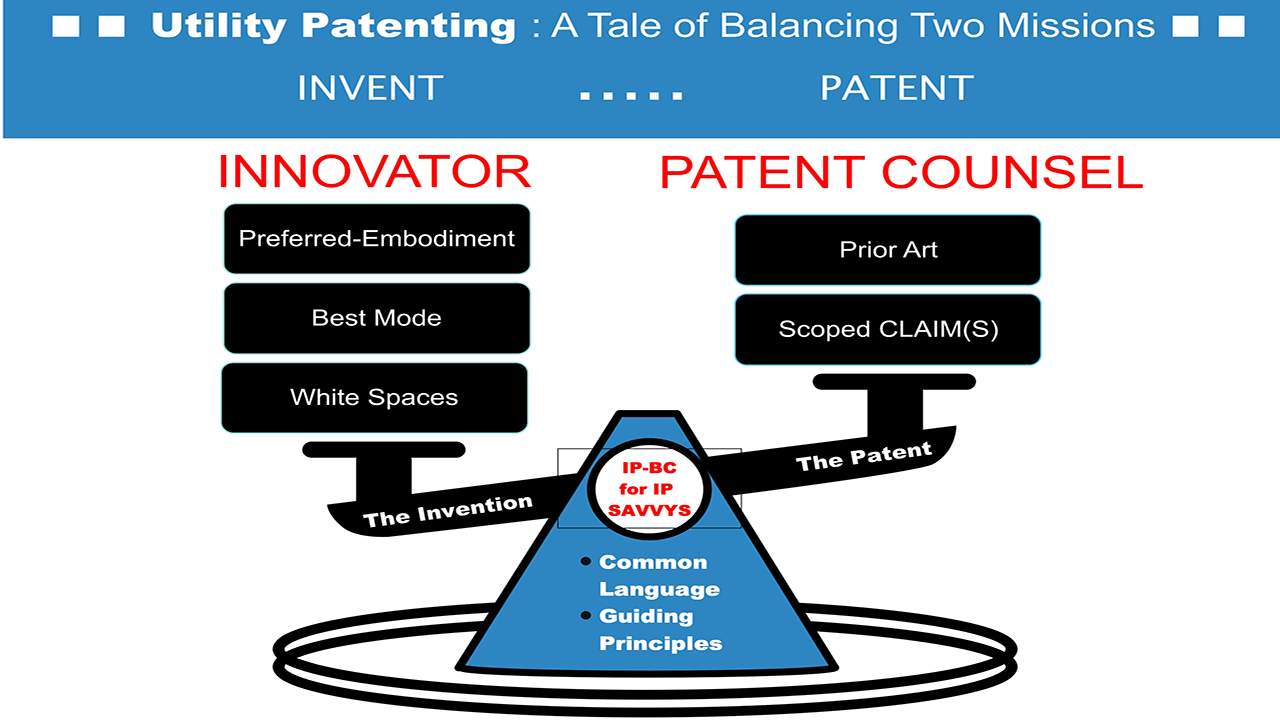Common Misconceptions 3: Only the Shaman Patent Counsel can and should write the first claim...or Schwartz's ABC rule

Yes and NO (I repeat NO NO NO :)). Why am I saying this and what do I really mean? What is the Schwartz ABC rule? (explained shortly-it stands for Always Be Claiming).
The yes part is important to state up front. When you file your patent application, my guidance is that the timely completed draft application along with a review and editing of the independent claims be done by a competent patent counsel in your field of art (if they haven't already engaged in a lot more of the crafting/drafting work by that time). In other words, if you engage patent counsel early or alternatively later on... deferring by creating IDPAW entries in preparation for a utility compliant patent application invention disclosure to counsel, you will want to have their claim language and grammar editing (hahaha but seriously even though each claim is a run-on sentence, it has a semantic format that is nuanced by MPEP rules), before filing.
Then why do I admonish NONONO? In the Intellectual Property BoostCamp and in my book Utility Patenting for IP SAVVYS, I advocate both a universal patent language (UP) for how to talk about patenting with counsel along with a set of guiding principles (GP) for how to tell the story of your invention in a way that it stands the test of all comers along with the test of time. ABC-Always Be Claiming is one of those guiding principles.
In TSM (The Schwartz Method), one of the FIRST THINGS YOU WILL DO as the pro se drafter of your Invention Disclosure Patent Application Workbook (IDPAW) entries will be to write LAYMAN's CLAIMs. I give you the semantic format for how to do this in the appendix of my book (just get the eBOOK and see for yourself-then take the course). Why a layman's claim and what form does it take in relationship to your finally filed claim(s)? Simple-if you can't write a layman's claim off the current "drawing" of the preferred embodiment (PE), then I will argue (not in an unkind way mind you) that DON'T KNOW WHAT YOU INVENTED. If you don't know what you invented and are asking patent counsel to refine your invention so it will fly as a patent, then youre on you way to the tulip patches of mis-formed claims with risky scope and the dungeon of eternal patent prosecution.
If you follow my ABC rule, then for each PE, you will develop the discipline of claiming it yourself using the context of my claim template and it's universal language. Mind you, it won't be the final claim you file for reasons I explain in the Advanced course and which patent counsel will gladly inform you about, but I promise you one thing. If you use TSM, then when you finalize your invention disclosure IT WILL HAVE A SET OF YOUR LAYMANs CLAIMS, and since in the end the only thing that matters on publishing is the claims, you are putting the horse in front of the cart on day one with patent counsel.
You will see that in the best practice management of your relationship with patent counsel, your order of creation captured(your representation of the iterative creation sequence in developing your PE) in your Utility Compliant Patent Application (UCPA) submission to patent counsel will be the jumping off point for taking YOUR patent drafting into their patent crafting (including the final editing of the formal claims and the justification of their scope).

